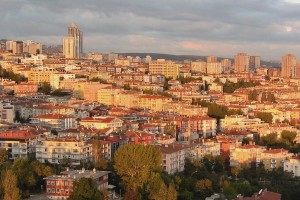My hometown is Wilkes-Barre, PA which is located in northeast Pennsylvania. The Nathan World Map of Natural Hazards showed Wilkes-Barre was in the moderate range of tornadoes, hailstorms, and winter storms. Wilkes-Barre appears to be in the zone 4 for hailstorms, 3 for tornadoes, and 1 for winter storms. I would have to disagree with the tornado rankings and say that Wilkes-Barre experiences more winter storms than tornadoes. The Nathan World Map of Natural Hazards is a nice generalization for seeing where things are likely to occur, but as far as in depth detail, I think it could be a little more specific than the broad generalization it gives to a region.
The disaster which I chose to monitor is in the states of Wisconsin / Michigan. There is a biological hazard which is infecting people across both states. It is a level 2/4 (medium) biohazard level and has been in effect since March 5, 2016. Forty-four people were confirmed to be infected with 17 already dead. The description of the hazard is bacteria and viruses that cause mild disease to humans or are difficult to contract. It is very possible for an outbreak of disease to hit a town like mine with the risk being mass amounts of infections or deaths. The difference which my town would experience would be the magnitude of infection compared to a large city. Wilkes-Barre, while it is a city, has more suburbs with houses not right on top of one another. Larger cities like Detroit, Michigan would have a tougher time battling an infection with a greater population. The benefit of Wilkes-Barre being a less populated city is there is less people to infect, and you’re not as close to people as you are in a major city. Wilkes-Barre also has a larger population of elderly people. Most who grow up in Wilkes-Barre still live there when they grow old, so a large population of elderly people would be more vulnerable to an outbreak of disease. The only way to prevent a major outbreak would be to caution people to seek medical treatment instead of being out in public and infecting more people.
The biggest concern which Wilkes-Barre faces would have to be flooding. Located on the Susquehanna River, Wilkes-Barre is very susceptible to flooding. After hurricane Sandy, there was major flooding which demolished entire neighborhoods all along the river for miles. Schools and businesses were closed for weeks, many went without power, and many never returned to their business or homes almost 5 years later now. I can only imagine what it would be like to leave your house and start over somewhere new. The national weather service has a website which records river levels and warns about the dangers of flooding in our area.
Resource: http://water.weather.gov/ahps2/hydrograph.php?wfo=bgm&gage=wbrp1
The best way to prevent either major flooding or widespread disease is caution and awareness. For flooding, major levees have already been built to keep a majority of the flooding down. As for the disease, the only prevention would be to tell people to seek help instead of unknowingly infecting others. The best people to perform these actions would be trained professionals such as doctors, or in the case of flooding, city officials, firemen, police, and anyone else trained for disasters. As for what I can do, I can gather resources my family might need in case of one of these disasters occurring so we are prepared and ready.

